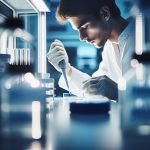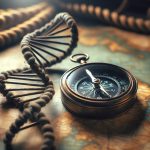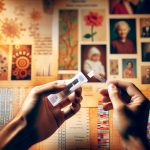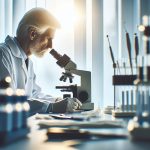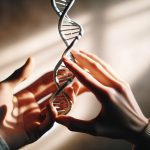Located in Pittsburgh, Cybergenetics stands at the forefront of bioinformatics, leveraging sophisticated mathematical techniques to interpret DNA evidence. The company’s pioneering solution, TrueAllele®, revolutionizes how forensic teams analyze complex biological data to determine DNA matches with unprecedented accuracy and objectivity.
In a revealing discussion, Dr. Mark W. Perlin, the Chief Scientific Officer at Cybergenetics, sheds light on the hurdles posed by mixed DNA samples in criminal investigations. He elaborates on how TrueAllele® efficiently addresses these challenges by disentangling mixed DNA evidence, thereby providing clearer insights into forensic analyses.
This breakthrough technology is not just about solving puzzles; it’s about bringing clarity where there was once confusion in forensic science. Through its innovative approach, Cybergenetics is setting new standards in the pursuit of justice, ensuring that every piece of genetic evidence can tell its story without ambiguity or doubt.
Origin and Development of the Company
Twenty-five years back, Cybergenetics embarked on a mission rooted in the Human Genome Project, focusing on revolutionizing how we interpret DNA. A standout innovation was their method for decoding Short Tandem Repeat (STR) data—crucial signposts within our genome that are key to identifying genetic variations.
The turning point came when the British government, trailblazers in forensic DNA but overwhelmed by an interpretation backlog, sought help. Their leap forward in automating data production had hit a snag: hundreds of thousands of samples awaited analysis, and despite round-the-clock efforts by scores of personnel, mistakes were not uncommon.
Here’s where Cybergenetics‘ prowess shone through. They tailored their TrueAllele® technology from its genetics roots to crack forensic cases with ease—starting with clearing the massive backlog of cheek swab samples.
Yet another challenge loomed—the conundrum of DNA mixtures found at crime scenes. These mixtures often contained genetic material from multiple individuals, complicating analyses considerably. However, leveraging mathematical models akin to those used for resolving PCR stutter issues allowed them to deconvolute these complex mixtures into individual profiles.
This pioneering work saw its practical application in 2008 when they resolved their first case—a dentist fatally attacked in his home under mysterious circumstances. Despite limited evidence comprising a mixed DNA sample under the victim’s fingernails, Cybergenetics managed to separate and identify the contributors’ profiles effectively. This breakthrough underscored their technological edge and marked a new era in solving crimes with mixed DNA evidence.
Present obstacles for forensic groups and the benefits of your technology
Interpreting DNA data often presents a major challenge due to human limitations in understanding complex genetic information. Typically, when individuals encounter STR (Short Tandem Repeat) data, it doesn’t always align with their expectations. As a result, countless pieces of crucial evidence are disregarded because they’re deemed too complicated to decode.
A striking example that illustrates this dilemma occurred roughly six years ago and involved the company Cybergenetics. During an incident where two cars engaged in gunfire and inadvertently targeted a police officer who happened upon the scene, investigators later recovered a handgun coated with DNA from four individuals. The crime lab handling the case initially labeled this evidence as indecipherable.
This is where Cybergenetics stepped in, applying their sophisticated tool named TrueAllele which separates DNA mixtures into identifiable profiles. In this specific instance, they managed to identify two prime suspects out of the mixture. Consequently, charges were dropped against one individual due to insufficient evidence while the other confessed guilt after being linked to the weapon by a significant margin, circumventing the need for an extensive trial process.
The effective application of TrueAllele has shone new light on numerous intricate cases involving severe crimes like multiple murders and sexual assaults that remained unresolved due to previously uninterpretable DNA evidence. Not only does Cybergenetics offer insights into these challenging scenarios via its website but also processes thousands of cases for about ten crime laboratories utilizing TrueAllele technology.
What sets Cybergenetics’ business model apart is its initial free screening service for potential clients, predominantly lawyers or law enforcement bodies, seeking clarity on ambiguous DNA findings from crime scenes. This preliminary analysis outlines potential matches within the collected evidence without immediate financial obligation, empowering clients with critical information necessary for advancing legal procedures or exonerating wrongfully accused individuals based purely on factual genetic data rather than contentious courtroom debates.
Why isn’t this a normal part of investigations?
People have been hesitant to embrace new technology due to cultural norms, but eventually, some aspects of this tech are being adopted through various versions available in the market. In the realm of forensic analysis, there exists a strong preference among professionals to carry out all procedures manually. This includes everything from handling DNA samples to interpreting results with their own eyes. However, this approach has its limitations as humans struggle with complex statistical problems that include numerous variables and variations.
Additionally, when these analysts present their findings in court, they face rigorous questioning which can be daunting if they’re unfamiliar with newer technologies. A common sentiment is if one cannot see it directly, then testifying about it becomes problematic. This mindset has been a challenge for over two decades.
However, change is on the horizon. The reanalysis of DNA data from the World Trade Center incident 15 years ago began shifting perspectives on what information could be gleaned from connecting remains to missing individuals. Furthermore, over the past five years, efforts have led to the exoneration of 10 innocent individuals thanks to advanced DNA analysis tools like TrueAllele. Unlike traditional methods which often provided one-sided outcomes—able to incriminate but not exonerate—the adoption of TrueAllele brings in an era of objectivity thanks to its use of probability models in statistical analysis.
TrueAllele‘s strength lies in its impartial process; it deals purely with probabilities without knowing whom it’s comparing against. High match statistics indicate presence while low ones suggest absence—this level of accuracy heralds a new dawn for justice where evidence speaks louder than presumption.
The logical step forward is widening access to national DNA databases by integrating modern technology instead of clinging onto outdated interpretation methods that barely utilize available evidence mixtures effectively. Opening up these databases would not only enhance law enforcement’s ability to solve crimes but also safeguard against wrongful convictions thereby fostering a more just society where science and technology play pivotal roles in uncovering truth.
Explained plainly, what is the mechanism behind your technology?
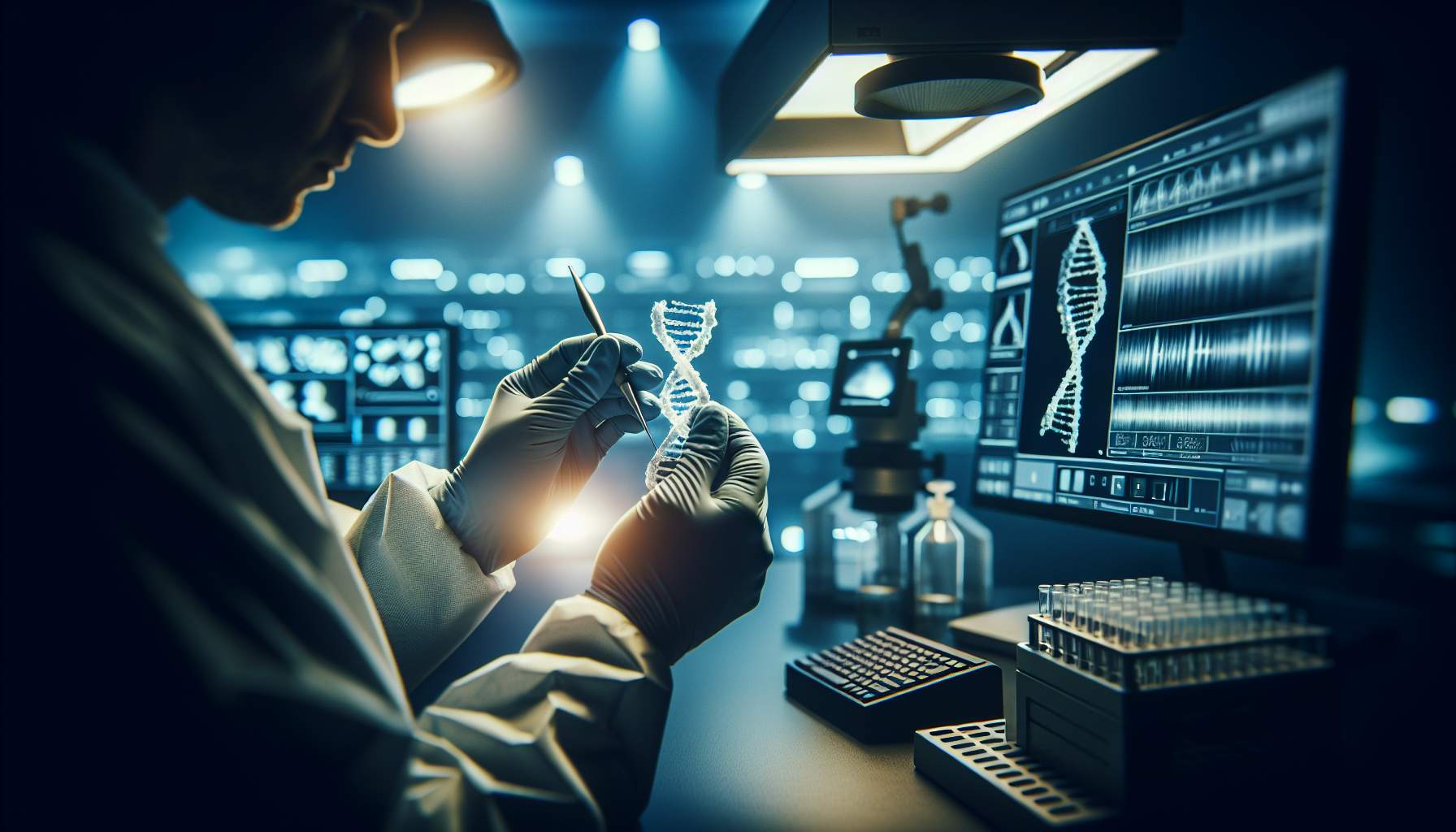
Polymerase Chain Reaction (PCR) is a groundbreaking technique used to replicate small segments of DNA. Although effective, this method is known for introducing inconsistencies and errors during the copying process. A person’s genetic makeup consists of combinations of alleles (variations of a gene) inherited from both parents. These alleles are found in specific areas known as loci, with current tests examining up to 25 locations to confirm human identity.
Imagine analyzing just 50 cells; each cell reveals two alleles at a single locus – one from the mother and another from the father. However, when these alleles are amplified through PCR, they don’t produce identical numbers of copies. Typically, differences in copy numbers vary significantly, occasionally reaching a tenfold discrepancy but most often staying within twice the amount. This variation in amplification is referred to as « stochastic effects » by forensic experts.
The distortion caused by PCR often complicates data analysis, especially when samples contain DNA from multiple individuals. The complexity can lead to so many potential interpretations that scientists may discard valuable data rather than attempt to decipher it—a common practice with intricate DNA evidence which means crucial information might be lost unless specialized assistance is sought.
Enter TrueAllele, a technology designed not just to note these variations but also leverage them for constructing precise genotype probabilities for each individual involved. Embracing variation and using it as an analytical tool represents a shift away from discarding complex data towards understanding and utilizing it—even if this innovation has not immediately transformed global practices due to reservations about changing reporting protocols in many laboratories.
Making use of the information received and its intended outcomes
In our email signatures, we clearly state that DNA samples are off-limits; instead, we work exclusively with data. The burning question on everyone’s mind always revolves around the identities concealed within these samples. Who might be lurking undetected? Our task is to demystify these enigmas.
Cybergenetics employs its TrueAllele technology to sift through the complex blend of genetic information, distilling it into identifiable profiles against a backdrop of uncertainty. By calculating how likely it is for certain genotypes to match by mere chance, we can pinpoint matches with startling accuracy. Imagine being able to declare that the odds of matching DNA from a crime scene to a suspect are astronomically high—this is what our technology makes possible.
Our goal transcends merely piecing together events; it’s about identifying everyone present at a crime scene and possibly uncovering unknown individuals involved. This clarity allows others to reconstruct what happened with greater precision.
Take an incident I discussed in court three years ago as an example: A young man found himself in a dire situation when an evening with friends turned into a deadly confrontation, leading to two fatalities and him pleading for help under threat. The prosecution aimed for a conviction of premeditated murder while the defense argued self-defense or accidental death amid chaos.
Crucial evidence like blood spatter and DNA under fingernails spoke volumes about the struggle that ensued—not aligning neatly with either side’s narrative but offering undeniable facts for consideration. Despite not fitting squarely into the prosecution’s strategy, this evidence was shared with the defense per legal requirements—an act that ultimately provided them substantial leverage in court by illustrating physical proof of conflict among those present.
At Cybergenetics, we stay in our lane as scientists and technologists, steering clear of legal interpretations or investigative conclusions. Nonetheless, there’s no denying that science has power—the power to illuminate truths hidden within genetic codes and bring clarity where there once was none.
What legal or ethical problems have you encountered and solved?
When it comes to scientific and legal scrutiny, two pivotal factors come into play: reliability and transparency. One might ask various questions regarding the dependability of a method. Is it effective? Are its results dependable and can they be replicated consistently? Ensuring a method’s reliability is not taken lightly, with stringent scientific and legal benchmarks in place to guide us through this complex landscape.
In the U.S., the Daubert standard acts as a critical yardstick for gauging reliability, emphasizing empirical testing over theoretical debate. This standard likens to evaluating a scale used for weighing, the core question isn’t about the possibility of measurement but rather if empirical tests confirm its accuracy. The essence here revolves around tangible proof of functionality.
Similarly, when discussing evidence weight or match statistics in scientific terms, we delve into more technical aspects like the log-likelihood ratio without getting bogged down in overly technical jargon that may alienate some audiences, particularly in courtrooms where such specifics may not be commonplace knowledge.
Turning attention to TrueAllele, an analogy presents itself as it serves as a DNA comparison tool akin to measuring scales. Its efficacy is proven through rigorous validation studies – over 40 so far – conducted independently or collaboratively, setting benchmarks for error rates unique amongst its peers. Unlike previous methods that offered unverified data, TrueAllele stands out by providing transparent error margins alongside each statistic reported.
A notable facet underpinning TrueAllele’s robustness is peer review; documented through both methodology descriptions and validation study publications which withstand up to ten unknown contributors per mixture analysis, showcasing unparalleled precision from vast amounts down to nearly imperceptible quantities.
Beyond these standards lies an unwavering commitment to transparency akin to ethical practice; where skepticism meets surprise due to the comprehensive disclosure provided. To date, approximately four gigabytes worth of detailed information including software insights, operational guides, case study data along with free software testing opportunities are made available, exemplifying an open-book approach rarely seen elsewhere.
In summing up this narrative on adherence standards within forensic genotyping validation processes underpinned by TrueAllele’s endeavors; it becomes increasingly clear how critical methodologies backed by extensive research break new ground towards ensuring credibility while fostering an environment ripe for scrutinized inquiry all whilst maintaining ethical high ground through unparalleled openness.
What future trends and technologies are likely to emerge in your field?
The crux of our current focus alongside various teams is unlocking historical mysteries. Over the past two decades, numerous DNA analyses have come up short, leaving crimes unsolved and innocent individuals wrongfully imprisoned. The question we’re grappling with is: How can automation unlock the potential of countless unprocessed DNA samples to rectify these errors?
Looking ahead, our goal mirrors that championed by British pioneers two decades ago—a future dominated by automation in forensic science. In such a world, manual labor in labs becomes obsolete as machines take over processes like PCR and DNA extraction. More importantly, data interpretation transitions from human experts to more precise computational methods such as those offered by TrueAllele.
This vision pivots on full automation within forensic analysis, streamlining our roles to comprehension of fundamental principles, crafting reports, and engaging with the public about our findings—a model exemplified by Cybergenetics. Just as one doesn’t need to be versed in MRI technology to utilize or interpret its results thanks to trustworthy technology advancements; similarly, embracing tested automations will revolutionize how we approach forensic science.
